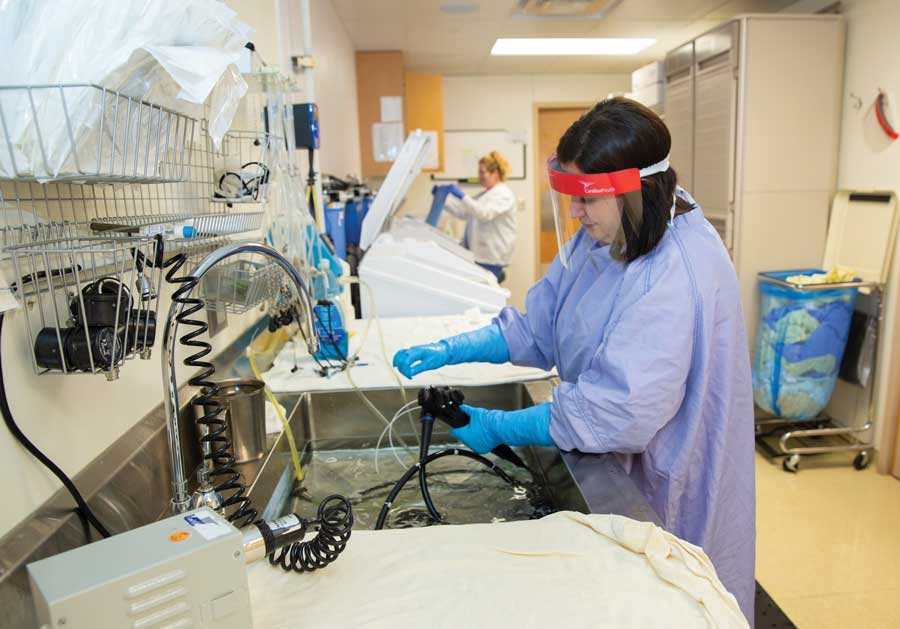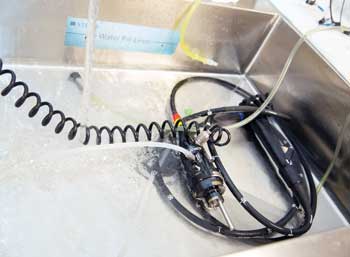The best way to prevent cross-contamination in your GI procedure rooms is to avoid making the following mistakes, says Libby Chinnes, RN, BSN, CIC, an infection prevention consultant based in Mount Pleasant, S.C., who’s seen them occur all too often in the facilities she visits.
1. Out-of-date IFUs. Following endoscopes’ instructions for use is easy to do when you purchase new instruments, but manufacturers regularly issue updates and changes to how the devices should be reprocessed. And all too often, these changes don’t get implemented. One of the most effective ways to ensure critical IFU updates don’t fall through the cracks is to designate a specific staff member to monitor updates and inform her colleagues about the changes. You can also partner with third-party consultants who will provide updates and educational programs on how to best implement the updates into your daily routines.
2. Inconsistent use of guidelines. It doesn’t matter which recommendations for proper endoscope handling and reprocessing you use — those issued by the Association for the Advancement of Medical Instrumentation, the Society of Gastroenterology Nurses and Associates or AORN, for example. What does matter is that you consistently apply the guidelines you choose to follow. Accreditation and Medicare surveyors don’t prefer one organization’s guidelines over another, but they will check to make sure you’re following one of the directives on a consistent basis.
3. Lack of training. How often do you train staff on cross-contamination prevention? Many facilities conduct refresher courses on an annual basis, during orientation for new hires and when new endoscopes or reprocessing equipment is purchased. That’s not often enough. Conduct staff-wide training — with physical demonstrations on how endoscopes should be cleaned and handled, and how automatic endoscope reprocessors work — more than once a year. The CDC recommends quarterly competency evaluations.
4. Inadequate pre-cleaning. Endoscope reprocessing begins at the patient’s bedside, where techs should wipe down the exterior of the insertion tube and flush internal channels as soon as procedures are concluded. This critical first step prevents biofilm from forming on the scope’s external and internal surfaces.
5. Inadequate manual cleaning. Even the best automatic endoscope reprocessors machines can’t disinfect endoscopes that haven’t been properly cleaned. Be sure diligent manual cleaning includes the flushing and brushing of all valves, channels, connectors and detachable parts.
6. Ignoring innovation. It doesn’t make sense to ignore the benefits offered by the technologies and tests that provide real-time evidence that scopes have been properly cleaned and disinfected. Take advantage of borescopes and real-time ATP testing to confirm scopes have been effectively reprocessed and are ready for repeated use.
— Jared Bilski
.svg?sfvrsn=be606e78_3)




.svg?sfvrsn=56b2f850_5)